
Did you know that approximately 6 million people quit their jobs in 2023?
The U.S. Bureau of Labor Statistics reported a slight decrease in the average annual separation rate, from 3.9% in 2022 to 3.2% in June 2024. Despite this decrease, employee turnover remains a significant and emotional issue for businesses today.

The numbers may seem to improve slightly, but the truth behind each percentage point is quite complex and personal for businesses.
When a company loses a good employee, it can be very stressful. It can take up to 2 years for a new hire to perform at the same level as the previous employee. Losing an experienced employee is a significant blow, especially when the cause is unknown.
It’s like trying to figure out a riddle without any hints. And you’re left scratching your head, wondering;
Thankfully, this is where an exit survey can step in, addressing concerns, understanding employee retention, and uncovering the reasons behind the employee’s decision. It’s a tool that can provide much-needed relief and reassurance in an otherwise uncertain situation.
Continue reading this blog to discover how exit surveys can empower you to make changes and prevent your best employees from leaving. With the insights from these surveys, you can confidently steer your company towards a more retention-friendly future and build a hybrid work environment to boost the productivity of the employees, as well as, the organization.
An exit survey is a structured questionnaire or interview conducted with departing employees to gather insights into their reasons for leaving, job satisfaction, workplace culture, and overall experience within the organization.
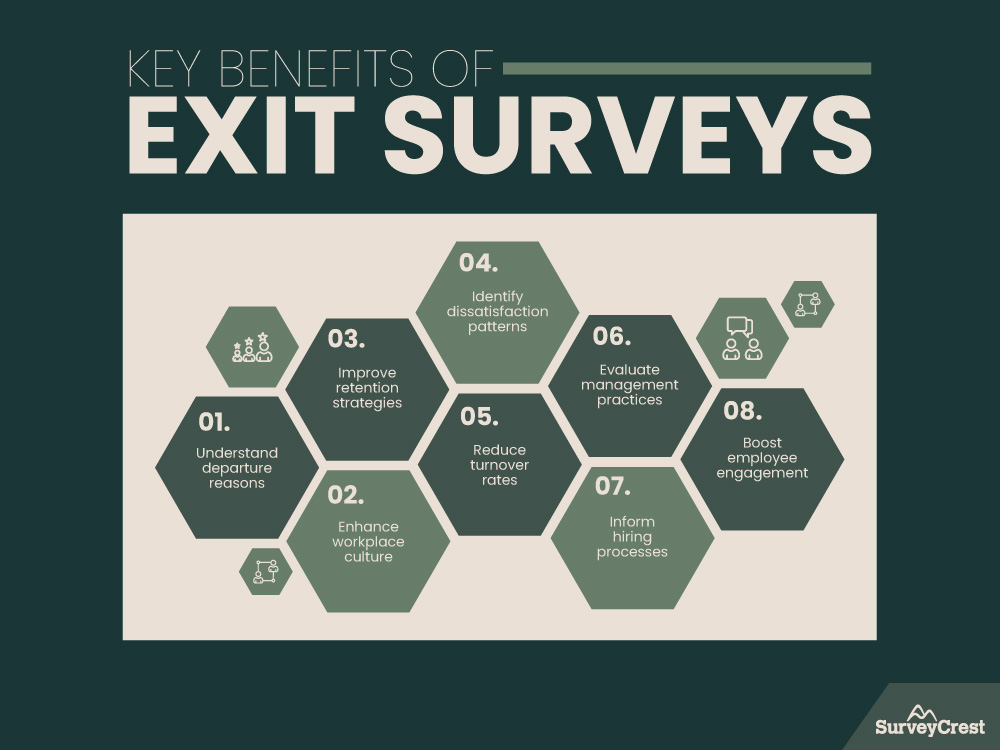
However, what exactly drives employees to leave in the first place? Understanding the common reasons behind employee departures, as highlighted in exit surveys, is essential for any organization aiming to improve retention and workplace satisfaction.
There are some common reasons for the departure of employees, which are mentioned below:
Understanding the reasons for employee departures is crucial for businesses, and exit surveys provide valuable insights. They enable companies to address underlying issues and make well-informed decisions. By analyzing survey feedback, companies can implement targeted strategies to improve workplace culture, reduce turnover, and retain top talent.
In the next section, we will elaborate on the significance of exit surveys and how they help companies gain insights from departing employees.
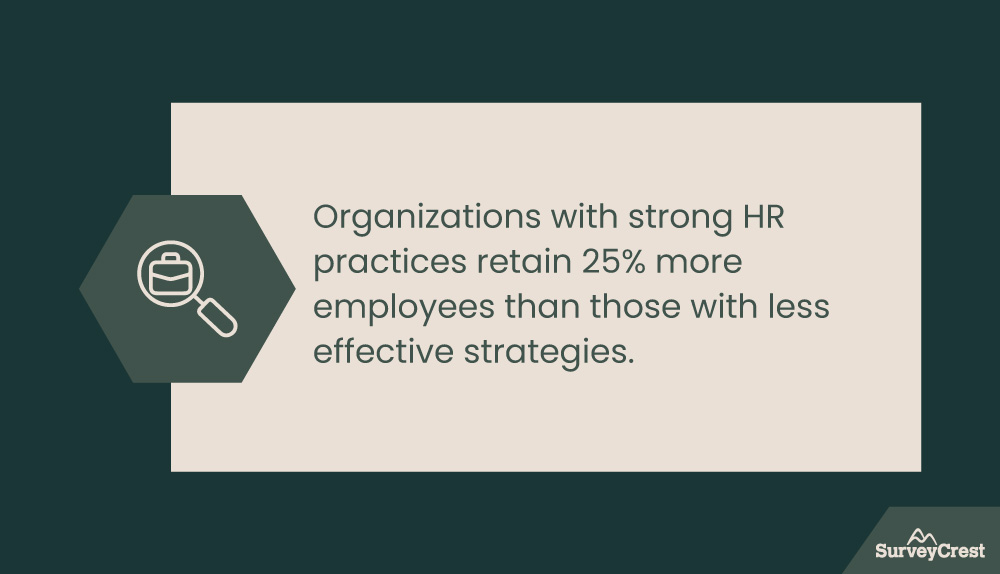
Exit surveys can help identify ineffective HR practices that lead top performers to leave, such as a lack of career development opportunities or poor management. Companies can make targeted improvements by understanding these issues, such as restructuring the HR department, providing new training, or implementing policies to prevent talent loss. According to a Society for Human Resource Management (SHRM) study, organizations with strong HR practices retain 25% more employees than those with weaker HR strategies.
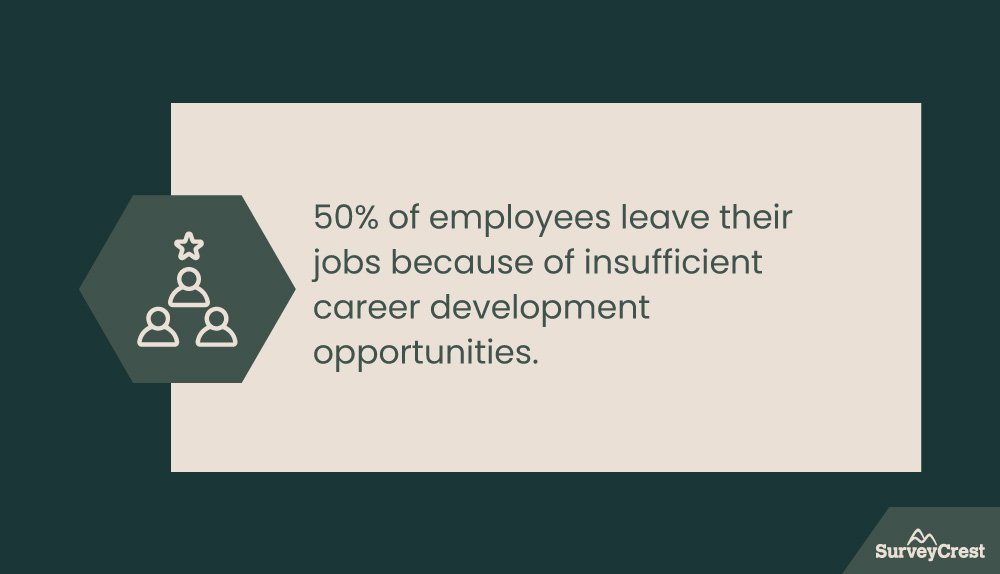
Understanding the reasons behind employee departures is crucial, and exit surveys can provide valuable insights. For instance, employees who feel undervalued are 34% more likely to leave their jobs. Exit surveys help identify these reasons, allowing companies to implement actionable retention strategies, such as offering competitive salaries, training influential leaders, providing bonuses and promotions, and improving management practices. Creating a positive work environment can significantly reduce turnover. Research by the Work Institute revealed that 50% of employees leave their jobs due to a lack of career development opportunities.

Exit surveys can serve as valuable competitive research tools, revealing competitors’ perks and benefits, such as flexible work hours, health insurance, or professional development opportunities. Understanding these insights can enhance a company’s offerings to attract and retain talent. Companies that provide attractive perks, competitive wages, and bonuses are likelier to keep their employees. According to a report by Glassdoor, 60% of workers consider benefits and perks a critical factor in their job satisfaction.
Exit surveys can uncover situations that may have made employees feel unsafe or mistreated, prompting immediate action to prevent similar incidents. Addressing these concerns can create a safer working environment and foster open communication with departing employees. This can also lead to mutually beneficial agreements that prevent potential legal claims, showcasing the organization’s proactive and responsible approach to employee relations and protecting its reputation.
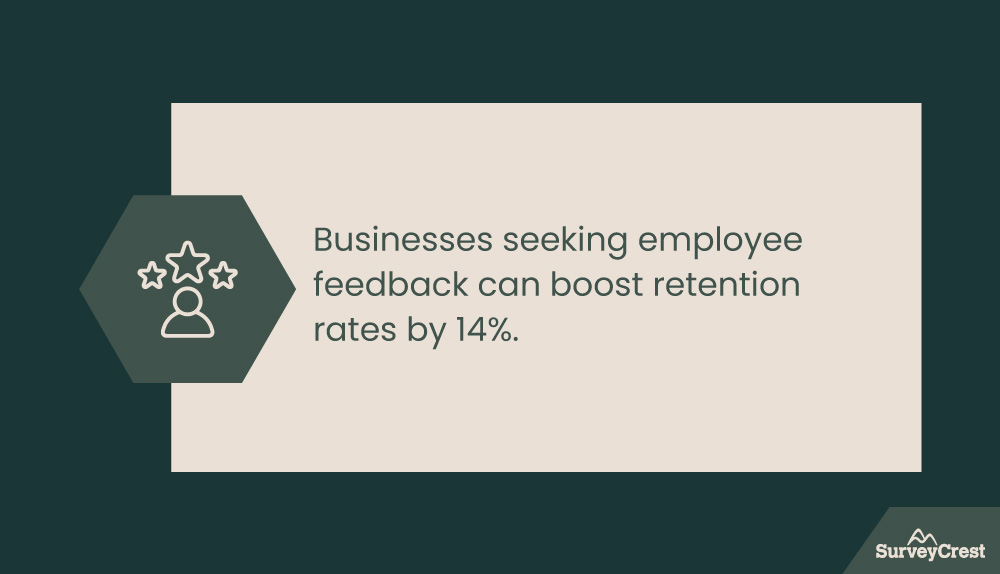
The feedback collected through exit surveys can help organizations gather suggestions from current employees to improve company culture for existing and future staff. Research from the Gallup Organization shows that companies actively seeking employee feedback can improve retention rates by 14%.
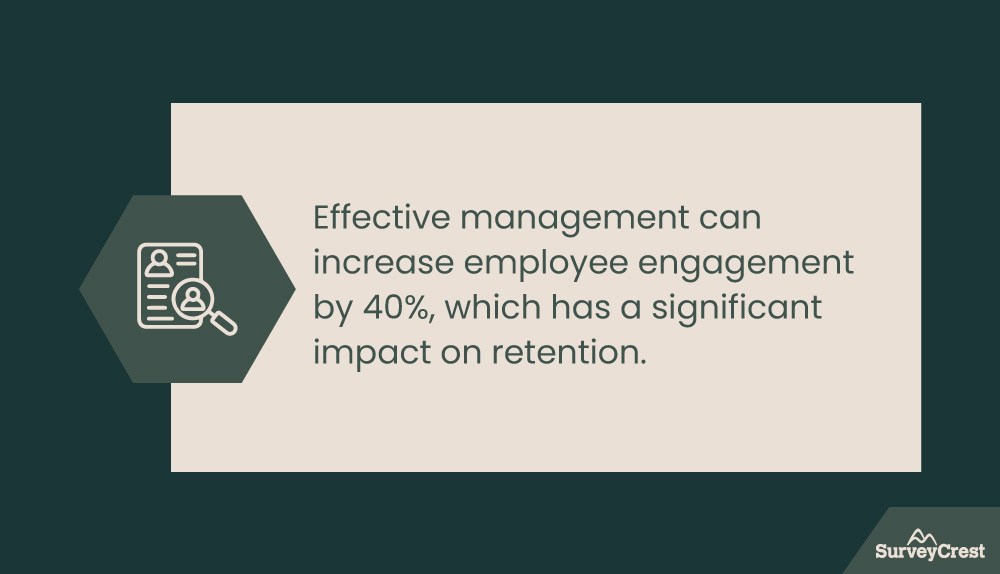
Conducting exit surveys allows organizations to assess management performance and effectiveness. Companies can refine management strategies by evaluating employee feedback to enhance employee satisfaction. Statistics indicate that effective management can lead to 40% higher employee engagement, significantly impacting retention.
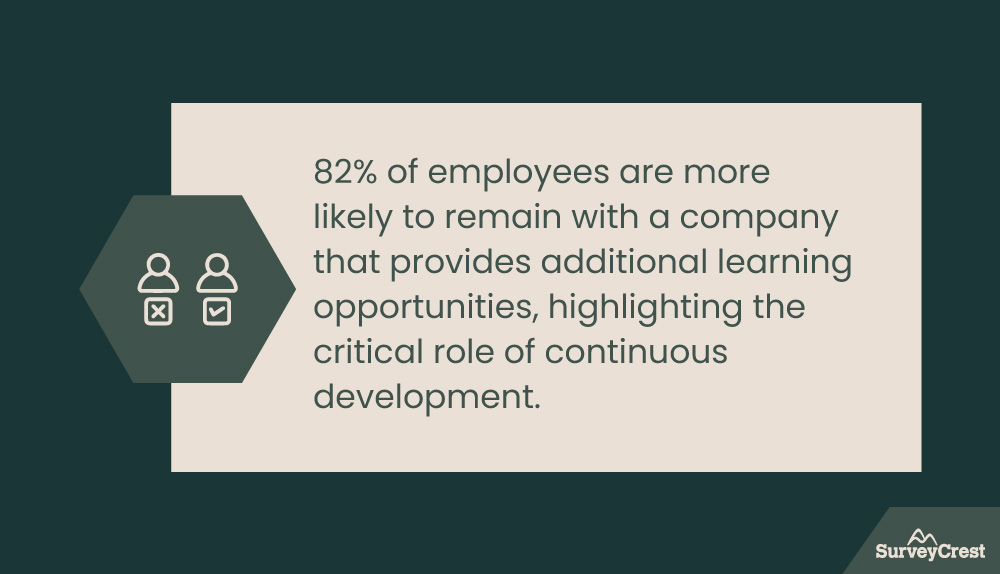
Exit surveys provide insights into potential areas for employee development and skills enhancement. By identifying the reasons for departures and areas needing improvement, companies can implement specialized training programs, boost management effectiveness, and create opportunities for increased employee engagement. Research shows that 82% of employees are more likely to stay with a company that offers additional learning opportunities, emphasizing the importance of continuous development.
Exit surveys are a great way to know the reasons “why employees leave your company”.
However, this is only possible when the survey is designed correctly. A poorly laid-out survey will not help, as it will give you unclear, useless answers.
A well-structured exit survey can provide specific information about issues that can help you change your business.
Below are some tips for strategically designing a perfect exit survey to pinpoint the issues!
Before conducting an exit survey, deciding on the objectives to determine the desired outcomes is essential.
For example:
Each business acquires feedback for various reasons. Understanding your particular interests is critical to tailoring the exit survey accordingly.
Aim for 5 to 10 key questions in your company’s exit survey.
The survey aims to gather the most insightful data on your quitting employees in a manageable time. Also, lengthy questionnaires have fewer chances of receiving a response.
By keeping the survey brief, you respect their time and increase the chances of receiving insightful, practical input that can help enhance your company culture.
It would help if you asked the right questions to get the necessary information without going into too much detail.
Let’s say your goal is to find out:
Then, there is no need to ask any additional questions; simply asking these questions will be sufficient to acquire the essential data.
Even if you’ve known the employee for years or know who is quitting, using a third-party service for exit surveys is always the best option.
This approach ensures that employees understand that we keep their answers private and won’t use them against them, so they feel comfortable sharing their thoughts.
Employees can also choose not to keep this information secret if they feel safe, which allows them to share their ideas with HR and team leads.
It is not good to ask for feedback simply for questioning; this will not create a good impression, and many employees may need to pay more attention to the questionnaire. Instead, make it clear how you intend to utilize their feedback. Assure them that their opinion isn’t just another thing to check off but a meaningful way to improve things.
You can directly contact the employee leaving with a personalized message or send the survey via a thoughtful newsletter. Let them know their feedback will improve the company’s workplace for current and future employees.
This will not only increase the likelihood of getting helpful feedback, but it will also leave a lasting sense of care and respect.
The following are some of exit surveys’ most frequently asked employee retention questions. These questions help gain valuable insights into the employees’ reasons for leaving and the culture of your company:
Employees who experience a lack of connection or appreciation are less likely to stick around for a long time. For this reason, it’s good to have but also essential to prioritize regular critiques and open communication with your employees.
If you want your employees to stay, it’s essential to make them feel heard and valued and show that their opinions matter. An exit survey is an effective way to build a top-tier workforce. It allows you to investigate deeply why an employee quit and determine what went wrong and what could be done better. By gaining these insights, you’re fixing problems for the employees who are leaving and building a better, more welcoming culture that will keep current and future employees committed to your company.
Kelvin Stiles is a tech enthusiast and works as a marketing consultant at SurveyCrest – FREE online survey software and publishing tools for academic and business use. He is also an avid blogger and a comic book fanatic.